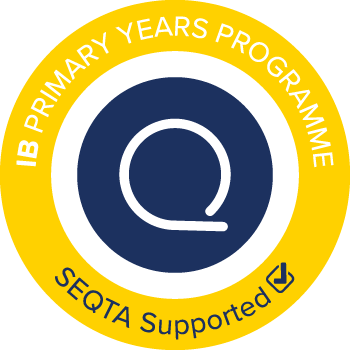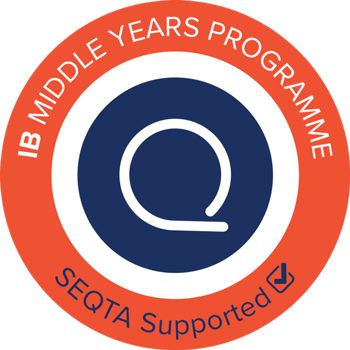How SEQTA supports the full IB continuum
SEQTA supports multiple curricula, transient students and staff, while centralising legacy systems and has been designed around modern pedagogy and the International Baccalaureate Programme Standards and Practices.
SEQTA supports the entire IB continuum and enables schools to address IB standards and practices by:
- Facilitating easy communication between teachers, students, parents and administrators where everyone gains value
- Enabling easy sharing of the IB curriculum with your school community
- Empowering IB coordinators and teachers with built-in access to concepts and IB objectives
- Providing a place for teachers to reflect on the knowledge, concepts and skills taught across the IB continuum
- Enabling teachers to collaboratively plan and share DP, MYP, and PYP unit planners
- Enabling a school’s leadership team to easily view data (attendance, assessment, pastoral care and more) to help support students, teachers, parents and school decision-making in the implementation of the IB continuum
- Integrating any curriculum directly into IB unit planners
- Monitoring in real-time the progress of the IB curriculum implementation
- Facilitating document storage enables schools to easily share their policies and procedures with their whole school community
- Quickly generating impressive IB PDF reports
How SEQTA supports the Primary Years Programme
Communication
A.6 The school promotes open communication based on understanding and respect.
- Parents and students can access their respective portals to view lesson details, resources and assessment results and feedback, reports and much more
- All IB policies are available for students and parents to access
- Attendance and key pastoral care information is communicated to parents
Curriculum mapping
C2.1b The school ensures that there is a coherent, horizontally and vertically articulated programme of inquiry.
C2.4 The written curriculum identifies the knowledge, concepts, skills and attitudes to be developed over time.
C2.4a The school has scope and sequence documents that indicate the development of conceptual understanding, knowledge and skills for each Primary Years Programme subject area.
Create scope and sequence documents that:
- Identify the knowledge, concepts, skills, and attitudes to be developed over time
- Allow teachers to reflect on the vertical and horizontal articulation of the programme of inquiry
Assessments and Reporting
C4.5 The school has systems for recording student progress aligned with the programme(s) assessment philosophy.
C4.6 The school has systems for reporting student progress aligned with the programme(s) assessment philosophy.
C4.7 The school analyses assessment data to inform teaching and learning.
- Through the SEQTA marks book, teachers can record student results and create reports which are aligned with the PYP assessment philosophy
- Assessment data can be exported to Excel and analysed
- Publish and distribute school reports online and notify students and parents
- Reports can also include attendance statistics, approaches to learning, learner profile attributes, etc.
Tasks
C3 Teaching and Learning.
C3.4 Teaching and learning promotes the understanding and practice of academic honesty.
- Integrate Turnitin to browse originality reports and plagiarism percentage
- Embed a range of resources to support the completion of work
- Students can e-submit work directly to teachers’ marks books
- Teachers can upload student work to the marks book for students to review
- Track individual student progress on tasks
- Provide formative real-time feedback on student progress at any stage
Attendance
A.6 The school promotes open communication based on understanding and respect.
- Easily record and track daily attendance that can be followed up if required
- Identify and analyse attendance patterns (minute by minute)
- Communicate attendance data to parents
- Export attendance information to Excel
- Take attendance on a mobile device
Inclusion
B2.8 The school provides support for its students with learning and/or special educational needs and support for their teachers.
C1.6 Collaborative planning and reflection incorporates differentiation for students’ learning needs and styles.
C3.10 Teaching and learning differentiates instruction to meet students’ learning needs and styles.
- Create, manage and share with students’ teachers their student plan identifying required support needs
- Select and integrate the myEd tool to differentiate the curriculum to individualise students’ learning and meet their specific learning needs
- Track student progress from a teacher’s marks book, provide feedback and respond to student questions.
Primary Years Unit Planners
C1.1 b Planning at the school uses the Primary Years Programme planner and planning process across the curriculum and by all teachers.
C1.c Planning at the school addresses all the essential elements to strengthen the transdisciplinary nature of the programme.
C1.4 The school provides for easy access to completed Primary Years Programme planners.
C1.4b The school ensures that Primary Years Programme planners are coherent student learning records.
C2.1d There is documented evidence that the curriculum developed addresses the five essential elements of the Primary Years Programme.
- The built-in PYP unit planner enables teachers to collaboratively plan, edit, document and share unit planners across the curriculum
- Built-in concepts make it easy to use
- All resources can be embedded within unit planners to facilitate collaboration and ensure easy access from year-to-year
Lessons and Classes
C2.2 The written curriculum is available to the school community.
C3 Teaching and Learning.
- Everything is organised in a single location so that teachers can collaboratively plan lessons, share curriculum resources, mark attendance, access the marks book, and track academic progress, to name a few, without leaving the system. This can all be shared with parents to facilitate school-to-home communication.
- Students can create folios and goals to share with their teachers and parents.
Ongoing feedback
C4.4 The school provides students with feedback to inform and improve their learning.
C4.8 The school provides opportunities for students to participate in and reflect on the assessment of their work.
- Teachers can provide continuous ongoing feedback to students and parents through the teachers’ marks book
- Remove tedious report writing by moving to a system of continuous feedback
- Students can complete reflections on individual tasks and share them with parents and teachers
- Teachers can provide formative feedback to students through the marks book
Track Academic Progress
A.6 The school promotes open communication based on understanding and respect.
- Parents, teachers and school leaders can easily track individual student progress and reflections.
Pastoral Care
A.6 The school promotes open communication based on understanding and respect.
- Enter and track pastoral care records
- Analyse trends in pastoral care data
- Manage student goals
- Manage student health centre/sick-bay records
- Communicate pastoral care information to key stakeholders
- Manage student behaviour
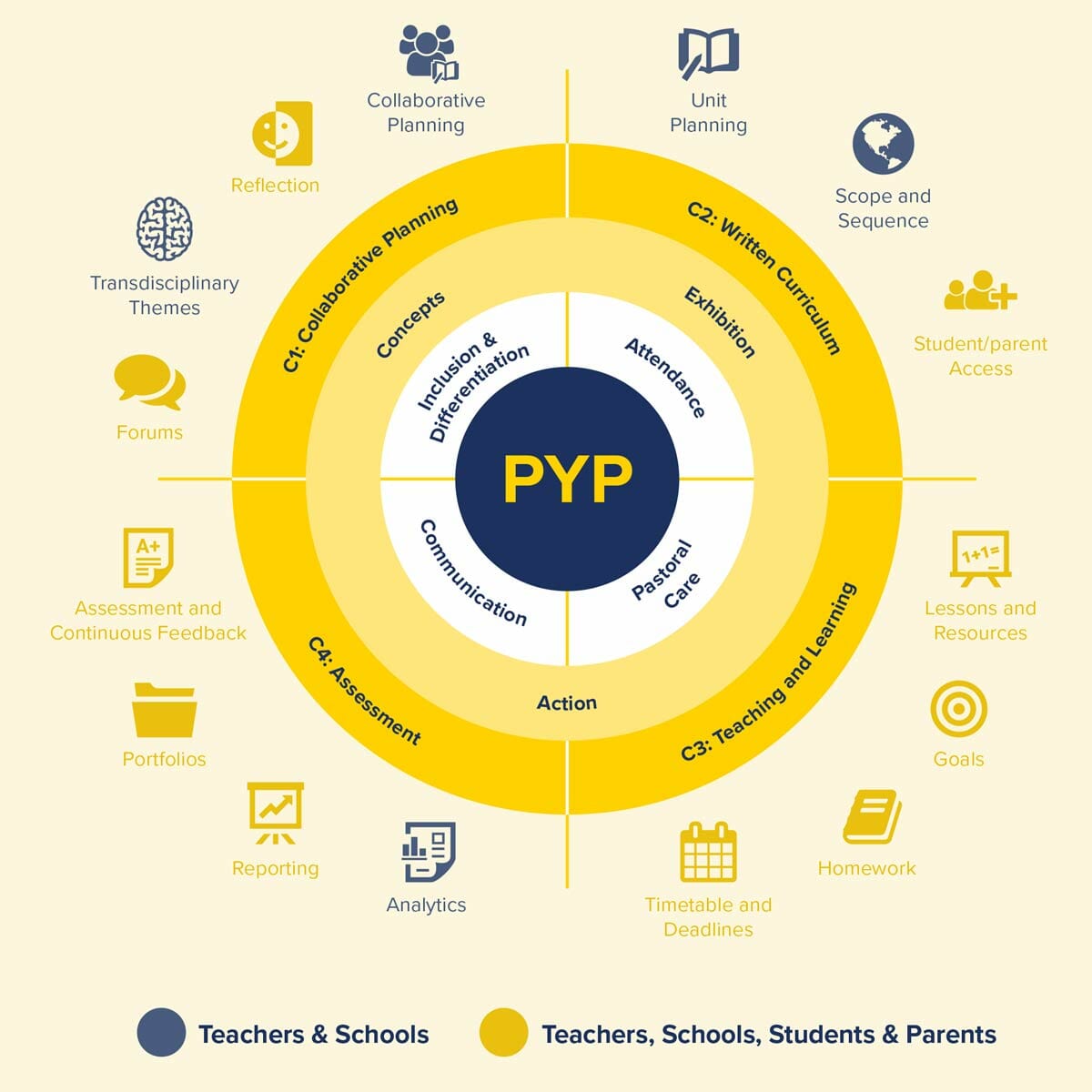
How SEQTA supports the Middle Years Programme
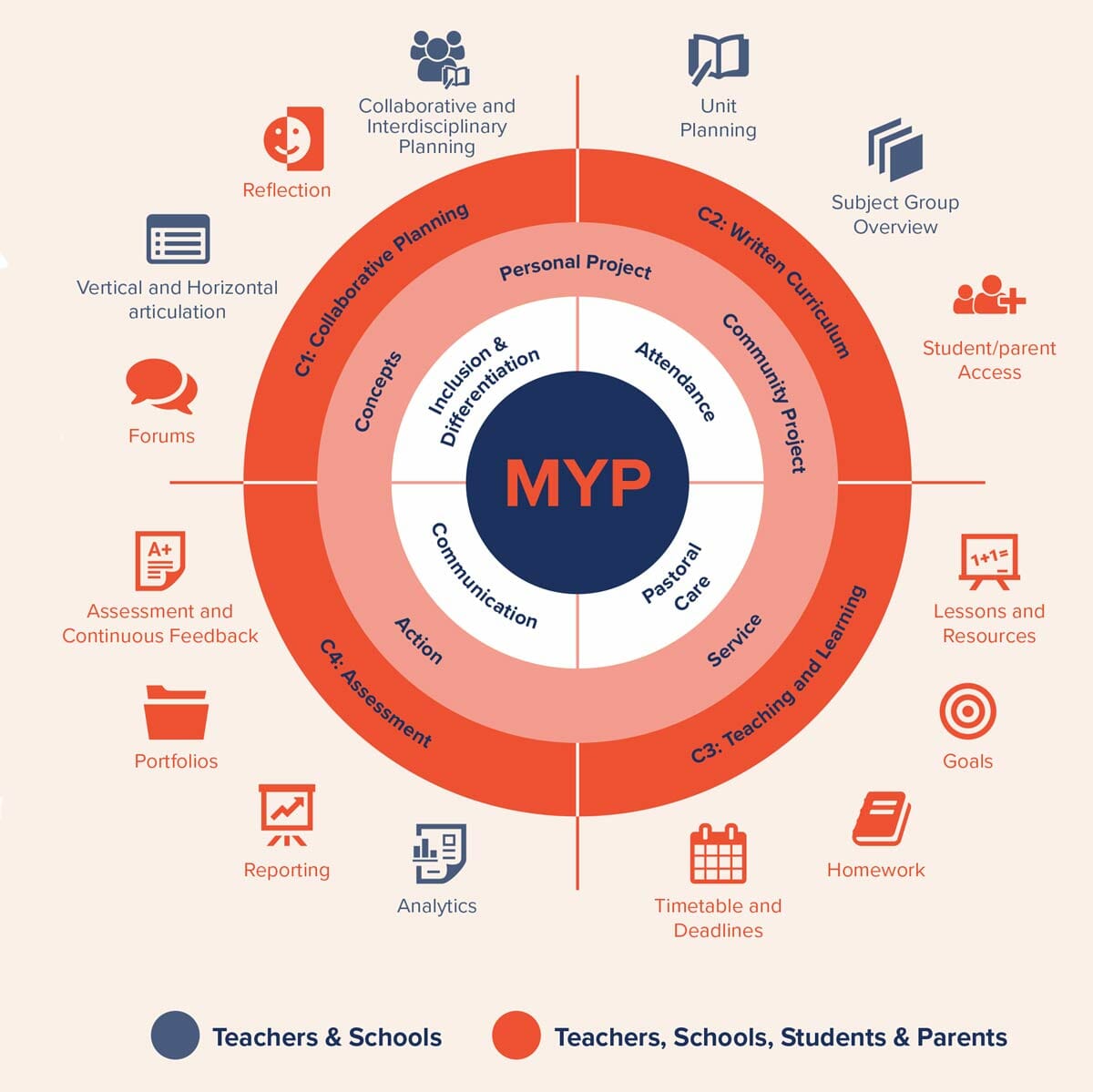
Communication
A.6 The school promotes open communication based on understanding and respect.
- Parents and students can access their respective portals to view lesson details, resources and assessment results and feedback, reports and much more
- All IB policies are available for students and parents to access
- Attendance and key pastoral care information is communicated to parents
Personal and Community Project
C2.1a The curriculum fulfils the aims and objectives of each subject group offered in each year of the programme and the personal project (or community project for programmes that end in MYP year 3 or 4).
- Easily manage the Personal and/or Community Project from initial goal proposal through to completing the final report
- Track individual student progress, set deadlines and view supervisor feedback in real-time
- Complete your assessment using built-in MYP Personal/Community project objectives A-D. Export your marks book to Excel and easily add details to student reports
- Provide formative real-time feedback on student progress at any stage of the project cycle
Curriculum mapping
A.6 The school promotes open communication based on understanding and respect.
C2.1c The written curriculum includes subject group overviews for each subject group offered for each year of the programme.
Create subject group overviews to:
- Identify common content and skills across subject groups and year levels
- Reflect on the vertical and horizontal articulation of the curriculum
Assessment
C4.5 The school has systems for recording student progress aligned with the programme(s) assessment philosophy.
C4. 7 The school analyses assessment data to inform teaching and learning.
- Through the SEQTA marks book, teachers can record achievement levels/marks for student work which is aligned with the MYP assessment philosophy
- Assessment data can be exported to Excel and analysed
Tasks
C3 Teaching and Learning.
C3.4 Teaching and learning promotes the understanding and practice of academic honesty.
- Integrate Turnitin to browse originality reports and plagiarism percentage
- Embed a range of resources to support the completion of work
- Students can e-submit work directly to teachers’ marks books
- Teachers can upload student work to the marks book for students to review
- Track individual student progress on tasks
- Provide formative real-time feedback on student progress at any stage
Academic Reports
C4.6 The school has systems for reporting student progress aligned with the programme(s) assessment philosophy.
- Publish and distribute school reports online and notify students and parents
- Include achievement levels for the MYP assessment objectives
- Report MYP grades (1 – 7) with grade boundaries in school reports.
- Provide Service as Action and Personal/Community project reports
- Easily review and moderate reports before publishing them to students and parents
Attendance
A.6 The school promotes open communication based on understanding and respect.
- Easily record and track daily lesson and homeroom (Tutor Group) attendance so that attendance officers can follow-up
- Identify and analyse attendance patterns (minute by minute)
- Communicate attendance data to parents
- Export attendance information to Excel
- Take attendance on a mobile device
- Allow students to self-register in and out of school through an iPad
Service as Action
C2.5a The curriculum provides sufficient opportunities for students to meet the learning outcomes for service every year of the programme.
C4.5a The school has a system for qualitatively monitoring student involvement in service according to the school’s learning expectations for service.
- Unit planners show that students are provided with opportunities to reflect on service that has been aligned to the MYP service learning outcomes
- Easily manage the Service as action requirements and track student service activities
- Track individual student progress and set deadlines and supervisor/advisor comments in real-time
- View student reflections and service learning outcomes addressed
Middle Years Unit Planners
C2.1d Unit plans are documented according to the MYP unit planning process.
C2.1e The curriculum fosters disciplinary and interdisciplinary understanding.
C2.4a The written curriculum includes the prescribed key concepts and related concepts in each subject group.
- The built-in MYP unit planner and Interdisciplinary unit planner enable teachers to collaboratively plan, edit and share unit planners across year levels and subjects
- Built-in key and related concepts and assessment objectives make it easy to use
- Directly integrate any curriculum into the MYP unit planner
Lessons and Classes
C3 Teaching and Learning.
- Everything is organised in a single location so that teachers can collaboratively plan lessons, share curriculum resources, mark attendance, access the marks book, set assignments, to name a few, without leaving the system
Ongoing Feedback
C4.4 The school provides students with feedback to inform and improve their learning.
C4.8 The school provides opportunities for students to participate in, and reflect on, the assessment of their work.
- Teachers can provide continuous ongoing feedback to students and parents through the teachers’ marks book
- Remove tedious report writing by moving to a system of continuous feedback
Students can complete reflections on individual tasks and share with parents and teachers - Teachers can provide formative feedback to students through the marks book
Track Academic Progress
A.6 The school promotes open communication based on understanding and respect.
- Parents, teachers and school leaders can easily track individual student progress and reflections
Pastoral Care
A.6 The school promotes open communication based on understanding and respect.
- Enter and track pastoral care records
- Analyse trends in pastoral care data
- Manage student goals
- Manage student health centre/sick-bay records
- Communicate pastoral care information to key stakeholders
- Manage student behaviour
Inclusion
B2.8 The school provides support for its students with learning and/or special educational needs and support for their teachers.
C1.6 Collaborative planning and reflection incorporates differentiation for students’ learning needs and styles.
C3.10 Teaching and learning differentiates instruction to meet students’ learning needs and styles.
- Create, manage and share with students’ teachers their student plan identifying support needs required
- Select and integrate the myEdOnline tool to differentiate the curriculum to individualise students’ learning and meet their specific learning needs
Track student progress from a teacher’s marks book, provide feedback and respond to student questions.
How SEQTA supports the Diploma Programme
Communication
A.6 The school promotes open communication based on understanding and respect.
- Parents and students can access their respective portals to view lesson details, resources and assessment results and feedback, reports and much more
- All IB policies are available for students and parents to access
- Attendance and key pastoral care information is communicated to parents
Unit planning
C2 Written Curriculum
- Choose from any of the DP unit planner templates OR create your own
Teachers can collaboratively plan and organise the curriculum
Lessons and Classes
A.6 The school promotes open communication based on understanding and respect.
C3 Teaching and Learning
- Everything is organised in a single location so that teachers can collaboratively plan lessons, share curriculum resources, mark attendance, access the marks book, set assignments, to name a few, without leaving the system
Ongoing Feedback
A.6 The school promotes open communication based on understanding and respect.
C4.4 The school provides students with feedback to inform and improve their learning.
C4.8 The school provides opportunities for students to participate in and reflect on the assessment of their work.
- Teachers can provide continuous ongoing feedback to students and parents through the teachers’ marks book
- Remove tedious report writing by moving to a system of continuous feedback
- Students can complete reflections on individual tasks and share them with parents and teachers
- Teachers can provide formative feedback to students through the marks book
DP Curriculum
- Access the full curriculum suite in SEQTA when your school uses the curriculum component
Attendance
A.6 The school promotes open communication based on understanding and respect.
- Easily record and track daily lesson and homeroom (Tutor Group) attendance so that attendance officers can follow-up
- Identify and analyse attendance patterns (minute by minute)
- Communicate attendance data to parents
- Export attendance information to Excel
- Take attendance on a mobile device
- Allows students to self-register in and out of school through an iPad app
Inclusion
B2.8 The school provides support for its students with learning and special educational needs and support for their teachers.
C1.6 Collaborative planning and reflection incorporate differentiation for students’ learning needs and styles.
C3.10 Teaching and learning differentiates instruction to meet students’ learning needs and styles.
- Create, manage and share with students’ teachers their individual student plan identifying support needs required
- Select and integrate the myEd tool to differentiate the curriculum to individualise students’ learning and meet their specific learning needs
- Track student progress from a teacher’s marks book, provide feedback and respond to student questions.
Diploma Core
C2 Written Curriculum
C3 Teaching and Learning
Creativity, Action and Service
- Students can create folios to track their CAS experiences
- Track individual student progress, set deadlines and view advisor comments in real-time
- View student reflections and service learning outcomes addressed
Extended Essay
- Easily manage the Extended Essay from proposal through to completing the final report
- Track individual student progress, set deadlines, view supervisor feedback and record interview notes in real-time.
- Provide formative real-time feedback on student progress at any stage of the essay cycle
- Students can submit their report to Turnitin
- Teachers can share lesson details, curriculum resources, set assignments to share with students
Theory of Knowledge
- Track individual student progress and set TOK deadlines
- Teachers can provide continuous ongoing feedback to students and parents through the teachers’ marks book on how students are progressing with TOK
- Teachers can provide real-time feedback on student presentations and upload video recordings of the presentations for students and parents to view
- Teachers can share lesson details, and curriculum resources, set assignments and more to share with students
Curriculum Mapping
C2.4 The written curriculum identifies the knowledge, concepts, skills and attitudes to be developed over time.
Create curriculum maps to:
- identify knowledge, concepts, skills and attitudes to be developed over time
reflect on the vertical and horizontal articulation of the curriculum
Assessment
C4.5 The school has systems for recording student progress aligned with the programme(s) assessment philosophy.
C4. 7 The school analyses assessment data to inform teaching and learning.
- Through the SEQTA marks book teachers can record marks for student work which is aligned with the DP assessment philosophy
- Assessment data can be exported to excel and analysed
- Parents, teachers and school leaders can easily track individual student progress and reflections
Tasks
C3 Teaching and Learning.
C3.4 Teaching and learning promote the understanding and practice of academic honesty.
- Integrate Turnitin to browse originality reports and plagiarism percentage
- Embed a range of resources to support the completion of tasks
- Students can e-submit work directly to teachers’ marks books
- Teachers can upload student work to the marks book for students to review
- Track individual student progress on tasks
- Provide formative real-time feedback on student progress at any stage
Academic Reports
C4.6 The school has systems for reporting student progress aligned with the programme(s) assessment philosophy.
- Publish and distribute school reports online and notify students and parents
- Include achievement levels for the DP assessment objectives
- Report DP grades (1-7) with grade boundaries in school reports
- Easily review and moderate reports before publishing them to students and parents
Pastoral Care
A.6 The school promotes open communication based on understanding and respect.
- Enter and track pastoral care records
- Analyse trends in pastoral care data
- Manage student goals
- Manage student health centre/sick-bay records
- Communicate pastoral care information to key stakeholders
- Manage student behaviour
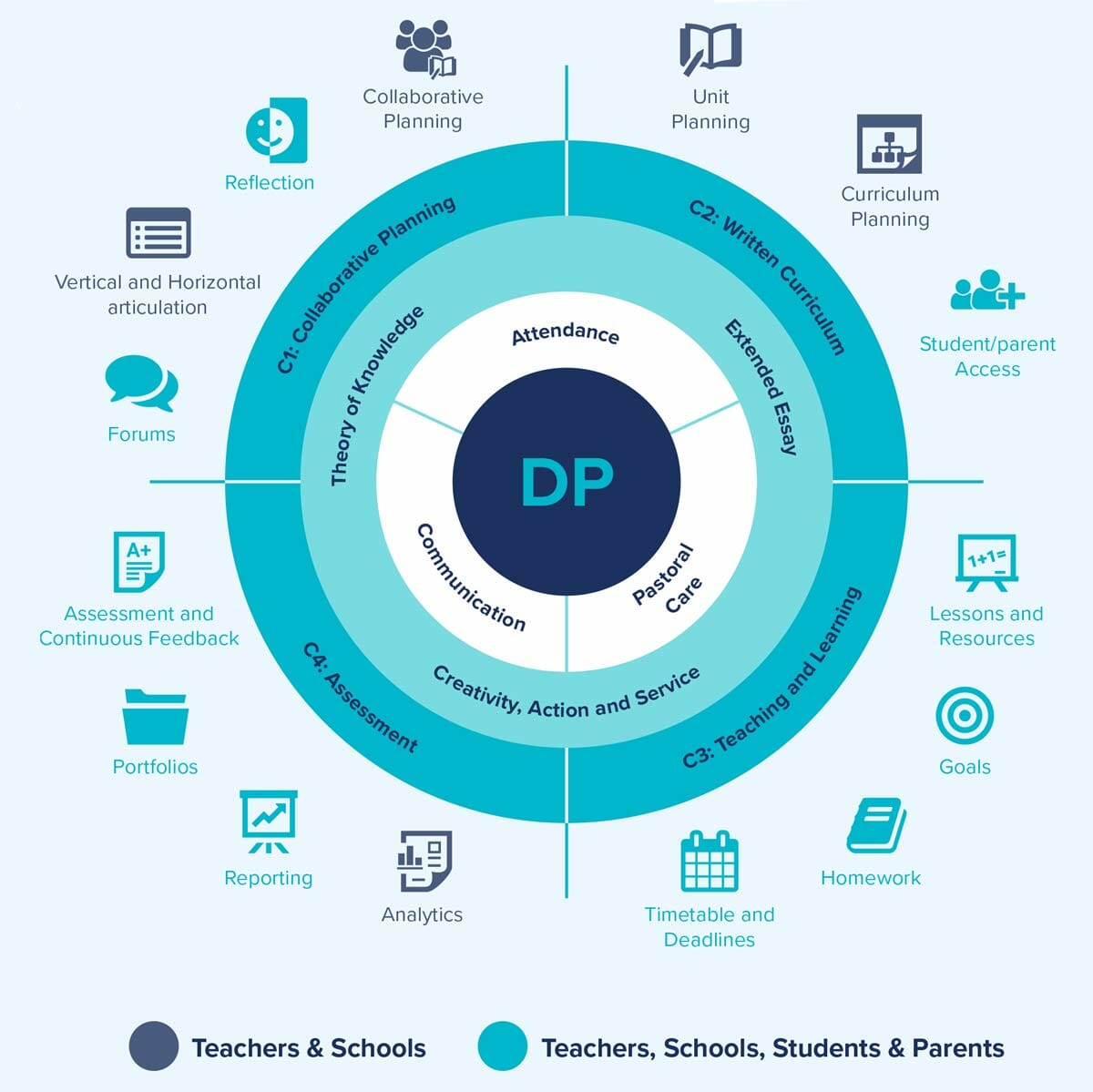
Book a demo
Learn more about how SEQTA helps your IB school


